Welcome to Matrix Education
To ensure we are showing you the most relevant content, please select your location below.
Select a year to see courses
Learn online or on-campus during the term or school holidays
Learn online or on-campus during the term or school holidays
Learn online or on-campus during the term or school holidays
Learn online or on-campus during the term or school holidays
Learn online or on-campus during the term or school holidays
Learn online or on-campus during the term or school holidays
Learn online or on-campus during the term or school holidays
Get HSC Trial exam ready in just a week
Get HSC exam ready in just a week
Select a year to see available courses
Science guides to help you get ahead
Science guides to help you get ahead
Can't get your head around the Renaissance? In this article, we explain key dates and figures from the Renaissance so you can make sense of context in your texts!

Join 75,893 students who already have a head start.
"*" indicates required fields

Join 8000+ students each term who already have a head start on their school academic journey.
Do you need to know about the Renaissance but don’t know where to start or how to relate it to your English studies? Well, you’ve come to the right place! In this article, we’re going to give you the what, who, where, and when so you can understand the Renaissance for English.
If you’re going to study any texts by Shakespeare, Marlowe, Machiavelli, Michaelangelo, Montaigne, or Petrarch, then you’re going to encounter the Renaissance.
The Renaissance was a pretty important period in human history and saw humanity make some pretty big leaps and bounds forward in terms of art, politics, and technology.
When you study the texts produced during what we recall the Renaissance, you’re looking at the development of important human ideas.
What we’re going to do now is explain why you need to know about the Renaissance, a brief history of it, and a discussion of key dates and figures. We’ll finish things off with a discussion of where you’re likely to encounter the Renaissance in your studies.
Students are often bamboozled by the texts they are studying. Having to deal with context is another level of complexity that can be hard to get their head around. in addition, when you’re thinking about text and context, you have to strike a balance between discussing the text and thinking about relevant pieces of context.
Some of the common student struggles are:
What we’re going to discuss in this article, and others in the series, are:
Let’s get started.
First, what is context? Context refers to the circumstances surrounding the production of a text, including:
Often context can tell us important things about a text’s production. Context is important as it lets us get a sense of what was happening around the time of a text’s composer was alive.
Context can help us make sense of the figures, setting, and events of a text. Shakespeare’s Julius Caesar makes sense when you think of the tumultuous nature of Europe in 1599. Similarly, the works of Jane Austen, wouldn’t make sense with the newly found class-mobility of the Regency.
A lot of what defines a context can be seen in the way people feel about what is happening in their society. This is where values and attitudes come in.
Values are the beliefs that a society or community hold in general. At any period in time, there is a tension between values and attitudes.
For example, in Australia in the 21st century, we generally believe in a secular egalitarian democratically socialist with a capitalist economy? What does this mean?
Now you may have thought that some of the above statements are a bit broad and not quite accurate. You wouldn’t be wrong. Some people argue that we’re not egalitarian enough, or we’re too socialist and give too much away. You would again be fair in these beliefs, but they don’t reflect Australia’s values as a whole, just your attitudes towards them.
An attitude is somebody’s perspective or opinion about their community or society’s values. Some people believe that their society has the correct values, others believe that their society is on the wrong track.
Writers and artists often display their attitudes in the texts they produce by celebrating, challenging or criticising their society’s values.
Often, composers get criticised or even imprisoned for the attitudes they display in their texts.
Clearly, values and attitudes are important.
Understanding the context, values, and attitudes of a text will help you make sense of its meaning and construction!
The Renaissance was a period in Western history where scientists, artists, philosophers, and writers began branching out the strictures of religious conservatism and exploring new ideas and paradigms. The name, Renaissance, comes from the French and means “rebirth.” This was seen as an apt name for a and period where humanity was rediscovering past intellectual pursuits and paradigms.
The Renaissance saw significant changes in:
What we’ll do now is give you a very broad overview of the Renaissance. Given the period of time and scale of the civilisation involved it would be impossible to provide a detailed history of the Renaissance, so this just catalogues some key ideas and figures.
The Renaissance, like many historical periods, is hard to pin down precisely. Most people think of the Renaissance as occurring during the 15th and 16th centuries. However, many scholars would argue it is more accurate to say the Renaissance refers to the period from the mid-thirteenth century running through to at least the 16th Century (some scholars argue for a “long-Rennaisance” starting from around 1200 and finishing in 1700).
Complicating matters, the Renaissance progressed at different places depending on where you look. Florence was at the heart of rapid artistic, political, philosophical, and intellectual ideas from the 13th Century and arguably kicked off the development of ideas. Whereas, England began to be at the forefront of things in the later period of the Renaissance when Continental ideas began to filter into the island nation, leading to revolutionary thinkers like Shakespeare and Marlowe.
It’s really important to note that the people living during the Renaissance didn’t really think of themselves as living during “The Renaissance.” During the later years, some Italian writers used the term ‘rinascita’ – rebirth. But the term Renaissance wasn’t really taken up until the 19th Century.
Furthermore, for your average peasant, who wasn’t independently wealthy or an artist or philosopher sponsored by a wealthy patron, the intellectual revolution of the period was something they most often knew nothing about.
Many intellectuals in the late (or High) Middle Ages had begun exploring ideas found in Ancient Roman and Ancient Greek texts. These scholars were most keenly interested in scientific and philosophical ideas from this period.
Renaissance scholars moved away from this limited field and started engaging with classical works of literature, drama, and art, too. People with the times, education, and means began to read classical poets and playwrights. This prompted people to reconsider their own context and circumstances and values. As people became away from the ideas that existed in the previous millennia, they changed their perspective on the present.
Some scholars argue that pandemics like the Black Death changed people’s perspective on life and death, leading people to contemplate philosophy outside of the conventional eschatological (the philosophical study of the end of things – typified by ideas like the Rapture and the Biblical Book of Revelations) or ontological (the philosophical study of being and existence – typified by questions like “what happens when we die?” or “what is the meaning of life” or “Is G/god real?”) focus of the time. Instead, philosophers began thinking about what it meant to be human and where we sat in the universe.
One of the massive upheavals of the period was Copernicus’ development of the heliocentric cosmos – the idea that the sun was the centre of the universe and the planets orbited around it. This was a massive departure from, Ptolein notion that the Earth was the centre of everything. This had profound ramifications for people who perceived themselves as the centre of everything. Similarly, the discovery of the so-called “New World” in the Americas and South-East Asia also challenged philosophical (and scientific) beliefs about individuals’ place in the universe and “God’s plan.” Many of these ideas were antithetical to religion and saw individuals punished for speaking out.
With these changes in philosophy, science, and perspective, politics and religion began to change, too. The gradual decoupling of religion and politics began in the 1500s (although it took several centuries). As philosophers began to question the ethics and morality of the Catholic Church, thinkers and politicians began to reconsider their connection to the Catholic Church.
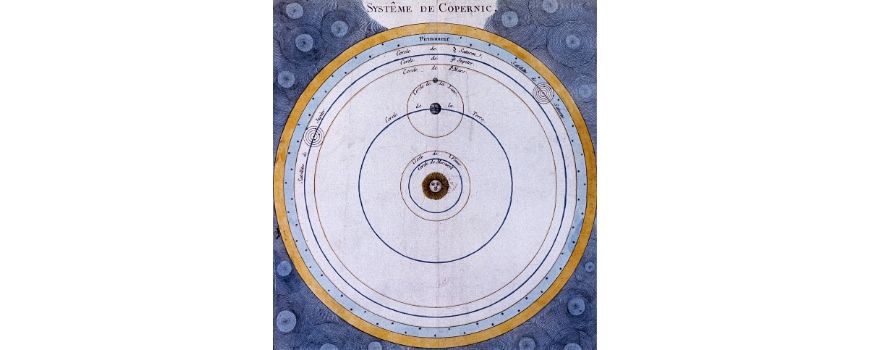
Humanism was the belief that human beings were full of artistic and intellectual possibility and, as such, had had the right and responsibility to do things that would bring meaning to their own lives. This belief was often at odds with Catholic doctrine as it put humans, and not God, at the forefront of intellectual and scientific pursuits.
One example was Pico della Mirandola who wrote the “Oration on the dignity of man,” a famous philosophical essay which challenged many of the doctrines held by the Church. It placed humanity and the pursuit of knowledge at the centre of all things. This lead to him being tried for heresy by the Pope and fleeing to France where he was arrested. Later, Mirandola died under mysterious circumstances (most likely he was poisoned).
This sort of focus on human capability was at the heart of the Renaissance Humanism, probably the most well-known philosophical idea of the period. Humanism was quite a broad movement and philosophy that affected religious and political beliefs.
One direct consequence of Renaissance Humanism was the Protestant Reformation, where the Church split into Catholic and Protestant branches, leading to the wars of Religion and increased tensions between England, the Papacy and Spain.
Renaissance politics saw dynasties become entrenched, but also saw a lapse in papal and religious power.
In Spain, the Spanish Empire grew and flourished. This was largely a consequence of the discovery of the Americas by Columbus in 1492. The wealth they accrued from exploiting the so-called “New World” (it was always there) funded their power and conquests across Europe.
In Italy, the city-states remained fragmented. Italy wasn’t a unified nation, instead, it was a series of duchies controlled by foreign powers like France and Spain. Some city-states began to experiment with independence. Florence, for a short time, became a republic under the rule of Soderini and the political thinking of Niccoli Machiavelli, author of The Prince and the Art of War.
The Prince was a powerful text that changed people’s perspective on politics. Rather than politics being the realm of kings, queens, and popes, it was shown to a pragmatic and underhanded process that balanced violence and generosity. The Prince was an influential text across Europe, it found its way into many royal courts, including Henry VIII.
Along with politics, religion changed significantly during the Renaissance. In fact, the two were inextricably intertwined. At the start of the Renaissance, the only religions in Europe were Islam with the Emirate of Grenada in what we now call Andalusia, Spain, and the Church (what we call the Catholic Church) everywhere else. Growing unrest around the perceived corruption of the Church meant that it was on borrowed time.
When the Church introduces the concept of the indulgence – in short, a way of paying a tithe ( a sort of donation) for the forgiveness of sins – many were uncomfortable. Most famously, Martin Luther. Luther was a priest – and lecturer in moral philosophy – for Wittenberg University. In response to the corruption of one friar, Johann Tetzel. in response, Luther wrote a document called “The 95 thesis into the power and efficacy of indulgences.” It was published to the church door on 10th November 1517.
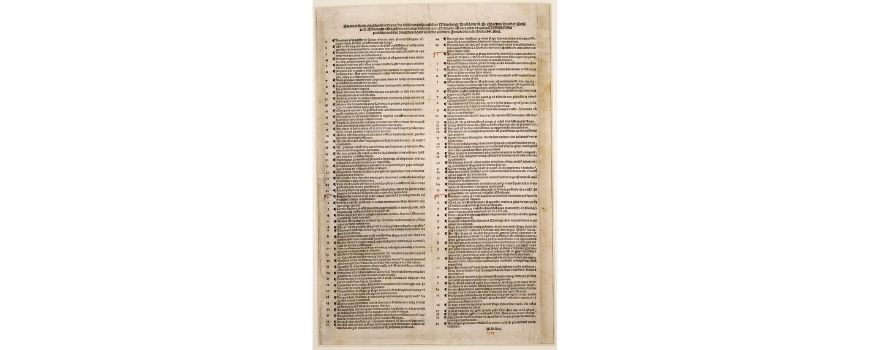
This was a hugely controversial move and had him tried for heresy by the pope and Holy Roman Emperor. The trial was adjourned due to war, Luther was abducted, and he went on to write a non-Latin version (this was widely regarded as heretical) of the bible which was widely disseminated. The Reformation spread and most famously, England followed suit.
The rise of Protestantism was a massive European upheaval and it occurred at the same time as protestant movements were happening across the continent.
It’s worth noting that Luther wasn’t the first to call for religious reformation. In England in the 14th Century, John Wycliffe (1328 -1384) had tried to translate the bible into vernacular English and argued against the indulgence. This saw him retroactively excommunicated and his works banned by the Church. he would later be recognised as a heroic figure in the Anglican Church. At around the same time that Luther was leading a Protestant revolution, John Calvin, a French minister began doing the same in Geneva.
Royal families began to throw their lots in with the Pope or go their own way. This eventually enabled Phillip II to gain a substantial foothold of much of Europe by the end of the 16th century.
In England, the failure of Henry VIII’s 1st wife to produce an heir led to King Henry VIII splitting from the Church and founding the Church of England. The declaration of religious independence by England put it on a collision course with Spain which had a legitimate claim to the British throne.
Over several generations, England flitted between Catholic and Protestant until Queen Elizabeth I took the throne. She expanded England’s international reach and wealth, sending privateers to raid Spanish fleets in the Caribbean while also making diplomatic connections with other nations such as the Dutch. Queen Elizabeth oversaw the defeat of the Spanish Armada (an invasion fleet sent to conquer England). Elizabeth’s success nearly bankrupted England. But established England as a significant power.
France, meanwhile, was riven by the wars of religion as a consequence of the Reformation. These began in 1562 as different houses of the French nobility struggled for power. Some were adherents of John Calvin and Martin Luther and they were persecuted for their non-Catholic beliefs. As this was around the time of England’s Mary I, many English Protestants sought refuge in France from Huguenots (French Protestants). Later, Elizabeth would provide much financial support for the Huguenots. England offered sanctuary for fleeing French Huguenots much as they had protected Anglican refugees.
The Renaissance saw some remarkable advances in science and technology. Metalurgy, shipbuilding, and architecture and engineering saw huge leaps and bounds. Much forgotten technology from Ancient Greece and Ancient Rome was rediscovered.
Architecture and engineering saw the building of giant structures and domes across Europe like the Basilica of St Peter, Jaén Cathedral, Château De Chambord, and the Dome of the Florence Cathedral.
Of particular importance for English students are Copernicus’ advancement of the Heliocentric Model of the solar system and the printing press.
The movable type printing press of 1439 was probably the most important single invention of the Renaissance. Prior to Johannes Gutenberg’s invention, literacy in Europe was very low. Most people couldn’t read or write. Books were expensive items that were laboriously copied by hand. The average peasant would likely not own a book, let alone be able to read one.
The conventional printing press required a single plate to be carved and inked before a copy was pressed. this was an expensive and slow process. The advent of movable type meant that much longer versions could be printed in one hit. Printing en mass allowed the written word to spread rapidly across countries and continents.
The development of the Gutenberg press meant that documents like Luther’s 95 Theses or Machiavelli’s The Prince could be easily translated and published in new markets. This allowed for new ideas to disseminate rapidly across Europe, changing the face of its people and politics.
Heliocentricism, the celestial model that places the sun at the centre of the solar system (and not the Earth). This model was developed and put forward by Nicolaus Copernicus in his ‘De revolutionibus orbium coelestium.‘ This was published in 1539, challenging the prevailing, and wrong, idea about the structure of the universe.
This caused many people to reevaluate their place in the universe and the place of God within it. This coincided with other great upheavals of knowledge in the period, such as the discovery of the Americas by Columbus. The rising doubt and uncertainty around what was true and not lead to the Church clamping down on dissenting worldviews.
The rise of Heliocentrism was propagated by Giordano Bruno and Galileo Galilei. Bruno was tried for heresy and burned at the stake in 1600. While Bruno was tried and burned, Galileo was tried and placed under house arrest and his works banned.
The rapid scientific advances of this period undermined Church and Royal authority. Elizabeth I famously placed limits on what could be printed to quash dissent. The Catholic Church often submitted any new, popular scientific papers to the inquisition for examination. This was doubly true of texts that questioned the efficacy of the bible or church figures.
Dante Alighieri (1265-1321) – Italian poet and philosopher. Dante wrote the Divine Comedy an epic poem in 3 parts that relates a journey through Hell (Inferno), Purgatory (Puragtorio), Paradise (Paradiso). The images in the Divine Comedy meld classical descriptions of the Underworld with contemporary religious ideas. His portrayal of Hell and Purgatory became the stereotypical representations.
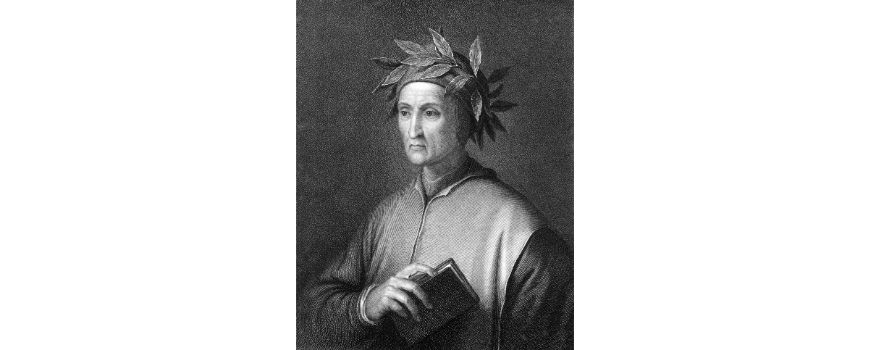
Petrach (1304-1374) – Father of humanism and creator of the sonnet form. Petrarch’s journals – the Secretum – catalogue his perspectives on philosophy and religion as a series of dialogue.
Filippo Brunelleschi (1377-1446) – A Renaissance architect and painter. He designed and constructed the Florence Baptistry doors. Revolutionising the construction process of design, supervision, and construction. He built and designed many churches and a hospital (Orphanage). He designed and built the Florence Cathedral Dome.
Brunelleschi was also a sculptor and painter. His experiments with perspective became the foundation for Renaissance painting.
Jan van Eyck (c. 1390 – 1441) – Belgian painter. He was one of the early Flemish artists who blended realism with symbolism. He experimented heavily with perspective. Most famously in his “Arnolfi Portrait”
Joannes Gutenberg (C. 1400 – 1468) – A German inventor and publisher. He invented the printing press in 1439. His press used movable type, an innovation allowing his press to produce large volumes in a short period of time.
Cosimo de’ Medici (1389 – 1464) – A banker and political reformer. Medici fostered the democracy of Florence and sought to foster it. He bought peace to the province and helped develop peace in Northern Italy. His political work allowed for Florence to become a thriving site for the arts and philosophy.
Leonardo Da Vinci (1452 – 1519) – The famous polymath from Florence. Da Vinci was an artist, engineer, architect, and scientist. His paintings like the Last Supper and the Mona Lisa are considered timeless masterpieces. Leonardo’s paintings were so accurate because he had the opportunity to study anatomy. His drawing, “Vitruvian Man”, amongst others, showcased his knowledge and understanding of the human body.
Giovanni Pico della Mirandola (1463 – 1494) – A philosopher and Humanist. His essay, “The Oration on the Dignity of Man”, an essay in which he discussed the capabilities of humans and their place in the world, was pivotal Renaissance text and widely translated and disseminated. It is cited in Act 2 Scene of Hamlet.
Mirandola was an avid thinker and debater. His other famous text, the 900 Theses was a collection of arguments on religion, philosophy, natural philosophy, and magic that he was willing to debate with any challenger. It was declared a heretical text and banned. He was later tried for heresy and fled. He was most likely poisoned.
Christopher Columbus (1451 – 1506) – Italian Explorer and governor who “discovered” the Americas in 1492. He later ruled Hispaniola (today Haiti and the Dominican Republic.) violently and cruelly. He became notorious for his use of torture and brutality to maintain his rule.
Nicolai Machiavelli (1469 – 1527) – Florentine philosopher and politician. He was a foreign diplomat for the Florentine Government. He was a general under the Florentine Republic and led the defeat of Pisa during the Italian Wars. He wrote widely on many subjects but mostly war, governance, and law. His two most famous works were Discourses on Livy and The Prince.
The Prince was a controversial treatise written for Lorenzo de Medici and explained politics in a practical and pragmatic manner that destroyed the myth of the noble princely statesmen.
Desiderius Erasmus (1466-1536) – Dutch scholar and Philosopher. He wrote important translations of the New Testament that influenced John Calvin and Martin Luther that were instrumental for the Reformation. He was an important proponent for the concept of Free Will.
The Christian Soldier is his most important text, it espoused a philosophy of how to live a moral Christian life.
Michelangelo (1475 – 1564) – Florentine sculptor, painter, and architect. Michelangelo developed perspective in sculpture with his statue of “David”. His painting of the ceiling of the Sistine Chapel is arguably his greatest painting. One of his most significant architectural works was the completion of the Dome of the Basilica of St Peter’s, the largest man-made structure of his time.
Thomas More (1478 – 1535) – Clergyman and politician. More wrote the satirical novel Utopia. This novel satirised Catholicism and postulated a perfect society. More was also an advisor to Henry VIII and one of the architects of the Reformation in England.
Nicolaus Copernicus (1473 – 1543) – Astronomer and scientist. He developed the theory of Heliocentric solar system. He proposed that the sun, rather than the Earth, was at the centre of the solar system. This challenged the prevailing beliefs and religious doctrine because it meant that humanity was not the centre of the universe – challenging people’s understanding of God and religion.
Martin Luther (1483 – 1546) – Protestant reformer and scholar. His 95 Theses Against the Efficacy of the Indulgence was a pivotal text for the reformation. It challenged Catholic authority and pointed to a sense of corruption within the Church’s financial operations. Luther was a proponent of predetermination – that humans couldn’t control their destiny.
John Calvin (1509 – 1564) – A French minister and reformer. He was the chief pastor in Geneva from 1541-155. He wrote many tracts about protestant beliefs including the Golden Booklet of the True Christian life. Calvin was highly regarded in England. His works are cited by many, including Shakespeare. Calvin was a believer in predestination, that free will is a myth and that God decides all.
Michel de Montaigne (1533 – 1592) – A french solicitor and writer. Montaigne wrote extensively on a number of subjects and topics. He is widely credited with developing the essay as we know it today. His “Essays” were translated into several languages including English. The essays were influential on Shakespeare, who cites him extensively in The Tempest.
Edmund Spenser (1552 – 1599) – British poet. He wrote the trilogy of “The Fairie Queene,” an epic poem that celebrates the Tudor dynasty and Queen Elizabeth. Spenser also developed his own type of sonnet. He is considered one of the greatest English poets.
Mary Tudor (1516 – 1558) – Queen of England from 1553 – 1558 Mary I was staunch Catholic. She began to unpick the shift to Anglicanism. She was married to Phillip II King of Spain, arguably the most powerful figure in Europe at that time. Mary was Elizabeth’s half-sister and had hoped that she would raise an heir to the throne with Phillip II.
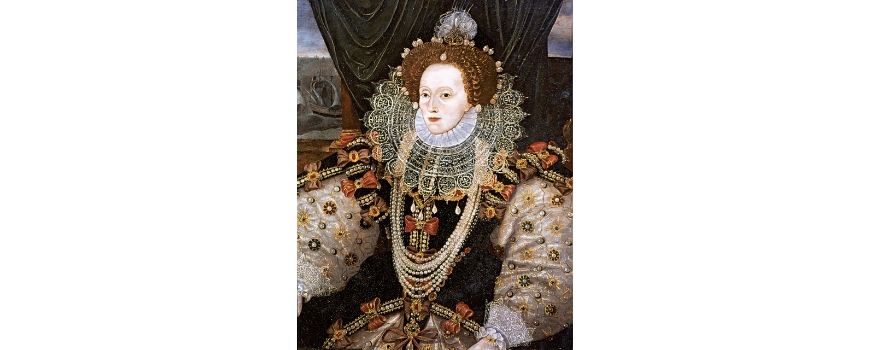
Queen Elizabeth I (1533 – 1603) – Queen of England from 1558 until her death in 1603. Elizabeth was a reformer and modernised England. Her 44 year rule brought stability to England. She oversaw the defeat of the Spanish Armada when they attempted to invade England in 1588.
Upon taking the throne she reverted the country back to Anglicanism. She further developed the Church of England over the course of her rule. She remained unmarried throughout her reign and earned the nickname “The Virgin Queen”.
Under her rule, the British arts flourished and writers and dramatists like Shakespeare, Marlowe, and Spenser flourished. Her latter years saw her become tyrannical and unpopular. Her death left England without a clear monarch to take her throne.
William Shakespeare (1564 – 1616) – The famous playwright. Shakespeare came from a quiet middle-class family and went on to become one of the most important literary figures in history. He was a prolific poet and dramatist.
He wrote 39 plays over his career, most by himself but some as collaborations. Shakespeare redefined the sonnet and composed 154 of them. He also penned to popular long poems The Rape of Lucrece and Venus and Adonis.
Shakespeare was a successful theatre owner and produced many performances for the courts of Elizabeth I and James I.
Christopher Marlowe (1564 – 1593) – A renowned dramatist, translator, and poet. He was rumoured to be a spy for the Privy Council of Queen Elizabeth. He was a vocal atheist (although he offered vocal support for Catholicism). However, some argue that this was a ruse for his work as a spy.
Marlowe’s most famous plays were Tamburlaine, The Jew of Malta, and Doctor Faustus. He is credited with popularising Blank verse, the use of iambic pentameter in drama that Shakespeare utilised throughout his works. Some critics believe that Marlowe was in fact the real author of Shakespeare’s works https://en.wikipedia.org/wiki/Marlovian_theory_of_Shakespeare_authorship.
John Donne (1572 – 1631) – Poet, Soldier, and Clergyman. Donne is famous for his early ribald and witty metaphysical poetry and his later religious poetry. Donne was born into a Catholic family but later converted to Anglicanism. He became the Dean of St Paul’s, a senior and well paid position in the Church of England.
Donne is renowned for his Holy Sonnets, and poems “The Flea” and “The Sonne Rising”
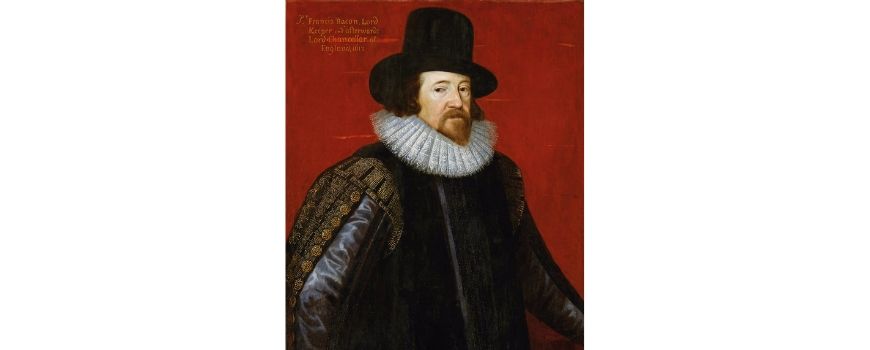
Francis Bacon (1561 – 1626) – An English scholar and statesman (diplomat). Bacon is credited with developing modern empiricism and the creation of the scientific method. Bacon wrote The Great Instauration and Novum Organum a series of texts that lay out a roadmap for the restoration of the sciences.
He was also a prolific essayist who released a volume of essays inspired by Montaigne in 1597. Some critics who doubt the authenticity of Shakespeare as the writer of his plays attribute them to Francis Bacon https://en.wikipedia.org/wiki/Baconian_theory_of_Shakespeare_authorship.
Galileo Galilei (1564 – 1642) – An Italian Astronomer and scientist. He is credited with confirming the Heliocentric model described by Copernicus and developing the early model of Physics. He published his controversial Dialogue Concerning the Two Chief World Systems in 1632. this brought him to the attention of the Inquisition who tried him in 1633. He is credited with developing important notions around the scientific method, astronomy, and experimenting with the laws of motion. Galileo is credited with simultaneously discovering the refracting telescope at the same period as Thomas Harriot.
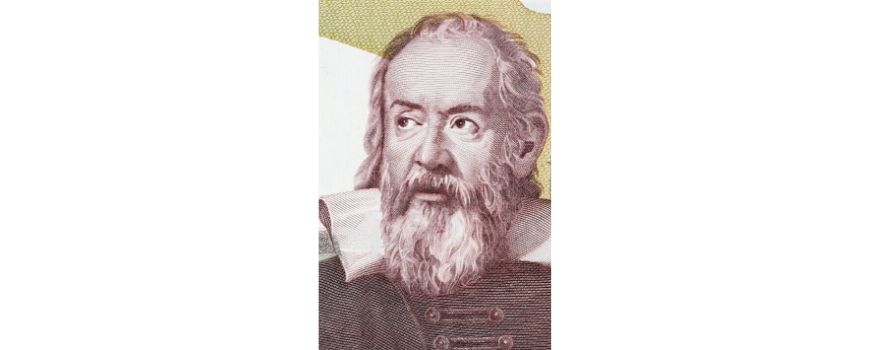
James VI/ James I (1566 – 1625)– Successor to Queen Elizabeth. He took the throne in Scotland in 1567 and in England in 1603 and ruled until his death in 1625. Although a Catholic, he converted to Anglicanism upon his English coronation. James I was an avid patron of the arts and brought peace with Spain. He survived much unrest including Guy Fawkes’ Gunpowder Plot.
When King of Scotland he was known for hunting witches and writing the Daemonologie a volume cataloguing his experience of hunting witches. James I’s history of witch-hunting and his text inspired part of Shakespeare’s Macbeth.
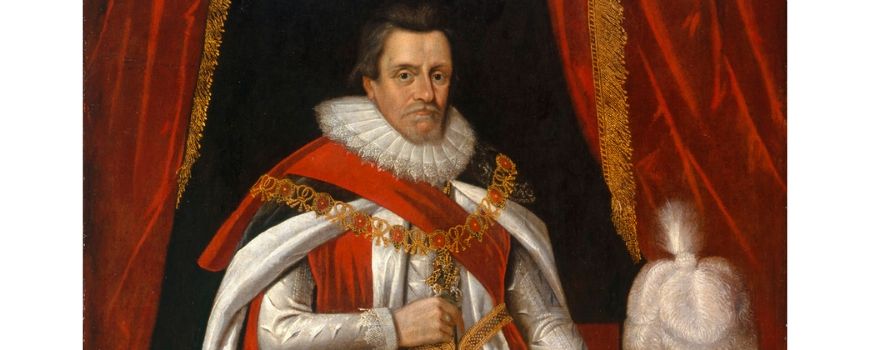
The legacy of the Renaissance can be spotted in many places in English! Most contemporary texts have their legacy in the works and ideas of Renaissance writers, artists, and philosophers. The rise of literature as a wide-spread mechanism for the transfer of ideas lays firmly at the feet of the printing press.
In High School, you may need to study the works of Machiavelli, John Donne, Marlowe, Spenser, More, or Machiavelli. Students in Year 12 English Advanced must study works by Shakespeare.
To fully understand works by Modernists and post-modern artist like TS Eliot, often having an understanding of the Renaissance and Renaissance figures is crucial to comprehending their texts.
The Matrix English course will help you consolidate your understanding and refine your writing skills to boost your marks!
Learn how to write Band 6 HSC responses
Expert HSC teachers, detailed feedback, and comprehensive resources. Learn with Matrix+ onlineEnglish courses.
Written by Matrix English Team
The Matrix English Team are tutors and teachers with a passion for English and a dedication to seeing Matrix Students achieving their academic goals.© Matrix Education and www.matrix.edu.au, 2025. Unauthorised use and/or duplication of this material without express and written permission from this site’s author and/or owner is strictly prohibited. Excerpts and links may be used, provided that full and clear credit is given to Matrix Education and www.matrix.edu.au with appropriate and specific direction to the original content.